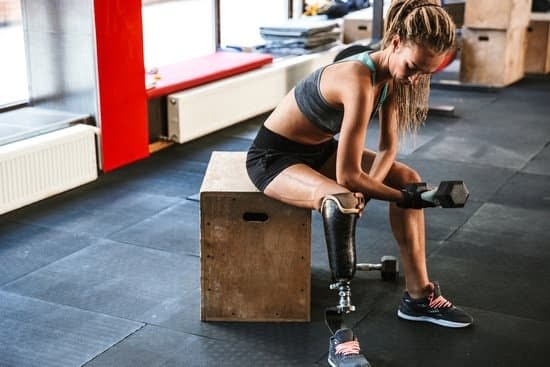Are you struggling with headphones that keep slipping during your workout? If so, you’re not alone. Many individuals encounter this problem when trying to maintain a consistent focus on their exercise routine. In this article, we’ll explore how to make headphones fit tighter to exercise and ensure they stay in place, allowing you to fully enjoy your workout without interruptions.
Having properly fitting headphones is crucial for an effective and enjoyable exercise session. Ill-fitting headphones can be distracting, causing frustration and interrupting your rhythm during physical activity. They can also affect the sound quality, which ultimately impacts your motivation and performance.
Furthermore, poorly fitting headphones can pose potential risks during exercise. Loose headphones may fall out and become lost or damaged, creating an unnecessary inconvenience and expense. In extreme cases, ill-fitting headphones can even cause accidents or injuries while working out. Therefore, it is essential to address this issue in order to avoid any interruptions or safety concerns during physical activity.
Understanding Your Headphone’s Design and Adjustability
When it comes to choosing headphones for exercise, it’s crucial to understand the design and adjustability features of different types of headphones. There are various options available, including over-ear headphones, on-ear headphones, and earbuds, each with its own set of adjustable features.
Over-ear headphones often have a flexible headband that can be adjusted to fit securely on the head, while on-ear headphones may have adjustable ear cups for a snug fit. Earbuds, on the other hand, come with different sizes of ear tips to accommodate various ear shapes and sizes.
One way to recognize when headphones are not fitting properly is by paying attention to how they feel during physical activity. If you find yourself constantly readjusting your headphones or if they tend to slip or fall out during exercise, then it’s likely that they are not fitting properly. Additionally, discomfort or pain around the ears or head after wearing headphones for an extended period is an indication that they may not be adjusted correctly to fit securely.
By understanding the specific design and adjustability features of your headphones, you can make informed decisions about which type of headphone will work best for your exercise routine. Whether it’s choosing over-ear headphones with a flexible headband or earbuds with adjustable ear tips, being knowledgeable about these design elements will ensure that you can achieve a secure and comfortable fit while working out.
Choosing the Right Headphones for Exercise
When it comes to choosing the right headphones for exercise, there are a few key factors to consider. The best types of headphones for physical activity are those that are specifically designed for sports and fitness use. These headphones are often sweat-resistant, lightweight, and built to stay in place during movement. Here are some recommendations for specific headphone models that are known for their secure fit:
- Wireless earbuds: Wireless earbuds are a popular choice for exercise due to their portability and freedom of movement. Look for models with ear hooks or fins that help keep the earbuds secure during vigorous activities.
- On-ear sports headphones: These headphones feature a band that goes over the head and sits on the ears. They are designed to be stable and resistant to movement, making them ideal for running, cycling, or other high-impact workouts.
- In-ear sports headphones: In-ear headphones with a neckband or cable connecting the two earpieces can provide a secure fit while allowing some flexibility during exercise.
It’s important to consider your specific workout routines and preferences when choosing the right headphones for exercise. Some individuals may prefer the freedom of wireless earbuds, while others may find on-ear or in-ear sports headphones more comfortable and secure.
Ultimately, selecting the right headphones for exercise can make all the difference in ensuring a comfortable and hassle-free workout experience. By investing in high-quality, sport-specific headphones with a secure fit, you can focus on your fitness goals without having to constantly readjust or worry about your headphone staying in place.
Adjusting the Headphone Band for a Snug Fit
When it comes to ensuring that your headphones stay in place during exercise, achieving a snug fit is essential. One of the key aspects of achieving this secure fit is properly adjusting the headphone band. Whether you are using over-ear or on-ear headphones, making sure that the band is adjusted correctly can make a significant difference in the comfort and stability of your headphones during physical activity.
Step-by-Step Guide
The first step in adjusting the headphone band for a snug fit is to familiarize yourself with the adjustable features of your specific headphones. Many over-ear and on-ear headphones have an adjustable headband that allows you to customize the size to fit your head comfortably. Take the time to explore these adjustments and determine how they can best be utilized to achieve a secure fit.
Next, it’s important to ensure that the band is not too loose or too tight. A common mistake is wearing the headphone band too tightly, which can cause discomfort and even headaches during prolonged use. On the other hand, if the band is too loose, the headphones may slide around or even fall off during vigorous movement. Finding a balance between these two extremes is crucial for achieving a snug and comfortable fit.
Tips for Comfortable Adjustment
To avoid discomfort while still maintaining a tight fit, consider padding or cushioning options for your headphone band. Some headphone models come with additional padding on the band itself, but if yours does not, there are accessories available that can provide extra comfort without sacrificing security.
Lastly, it’s important to periodically readjust the headphone band as needed. Over time, normal wear and tear can cause adjustments to loosen or become misaligned. Regularly checking and readjusting the headphone band will help ensure that your headphones continue to fit securely during exercise.
By following these tips and techniques, you can effectively adjust your headphone band for a snug fit, providing both comfort and stability during physical activity.
Utilizing Different Earbud and Ear Tip Sizes
When it comes to exercising, having headphones that fit securely is crucial to ensuring a comfortable and distraction-free workout. One of the key factors in achieving this secure fit is using the correct earbud and ear tip sizes. Here are some tips for ensuring you have the right size for your ears:
- Understanding your ear shape: Everyone’s ears are different, so it’s important to recognize the shape of your ears in order to choose the right earbud size.
- Experimenting with different sizes: Most headphone models come with multiple sets of ear tips in different sizes. Take the time to try out each size to see which one provides the best fit and seal in your ears.
- Checking for a tight seal: The ideal ear tip size will create a tight seal in your ear canal, blocking out external noise and preventing the headphones from slipping out during movement.
Using the correct earbud and ear tip sizes not only ensures a more secure fit for your headphones during exercise but also contributes to better sound quality. By taking the time to find the right size for your ears, you can enjoy a more comfortable and enjoyable workout experience without constantly readjusting your headphones.
It’s also worth noting that some headphone models offer customizable or moldable ear tips that can be shaped to fit your unique ear shape. These types of ear tips can provide an even more secure and personalized fit, making them an excellent option for those who struggle with standard earbud sizes. By utilizing these options, you can maximize both comfort and functionality during your workouts.
Using Additional Accessories for a Secure Fit
When it comes to maintaining a secure fit for your headphones during exercise, additional accessories can play a crucial role. One of the most common accessories used to keep headphones in place is ear hooks. These small attachments wrap around the outer ear, providing added stability to prevent the headphones from slipping or falling out during physical activity.
Ear fins are another useful accessory, particularly for in-ear headphones. They provide a more secure fit by anchoring the headphones within the ear canal.
For those using over-ear or on-ear headphones during exercise, headbands can be an effective solution for keeping them securely in place. The headband helps to hold the headphones steady, preventing them from moving around or falling off during vigorous movement. Additionally, sweat-resistant headbands can also help absorb moisture and prevent slippage caused by perspiration.
If you’re considering purchasing additional accessories to enhance the security of your headphones during exercise, there are various options available on the market. It’s important to choose accessories that are compatible with your specific headphone model and designed to meet your unique needs and preferences. By incorporating these accessories into your workout routine, you can ensure that your headphones stay firmly in place, allowing you to focus on your fitness goals without any distractions.
| Headphone Accessory | Description |
|---|---|
| Ear Hooks | Small attachments that wrap around the outer ear for added stability. |
| Ear Fins | Provide a secure fit by anchoring in-ear headphones within the ear canal. |
| Headbands | An accessory for over-ear or on-ear headphones; prevents movement during rigorous exercise. |
Proper Care and Maintenance for Secure Headphone Fit
When it comes to ensuring a secure fit for your headphones during exercise, proper care and maintenance are essential. Over time, the wear and tear of regular use can cause the headphones to become loose, affecting their ability to stay in place during physical activity. To maintain a secure fit, it is important to take care of your headphones regularly.
One of the key aspects of maintaining a secure headphone fit is to keep them clean. Sweat and dirt from regular use can cause the ear tips or earbuds to become slippery, leading to a loss of grip inside the ears. It is recommended to gently clean the ear tips with a mild soap solution or alcohol wipe to remove any buildup that could affect their ability to stay in place.
In addition to cleaning, proper storage is crucial for maintaining headphone fit. Storing headphones in a safe place where they won’t get crushed or tangled can help preserve their shape and functionality. Some headphone models come with carrying cases specifically designed to protect them from damage when not in use.
| Importance of Proper Care | Tips for Maintenance |
|---|---|
| Cleanliness prevents slippage | Regular cleaning with mild soap or alcohol wipes |
| Proper storage maintains shape | Use carrying cases to protect headphones when not in use |
Troubleshooting Common Issues With Headphone Fit During Exercise
Sweating Causing Slippage
One common issue that many people face when using headphones during exercise is the problem of sweat causing the headphones to slip or fall out. This can be not only frustrating but also a safety hazard if you are engaging in vigorous activities.
To combat this issue, consider using sweat-resistant headphones that are specifically designed for use during physical activity. Additionally, wiping down both your ears and the ear tips of the headphones before use can help create a better grip.
Discomfort During Physical Activity
Another challenge that individuals encounter when wearing headphones during exercise is discomfort, particularly with prolonged use. This discomfort can be caused by the pressure of the headphones on the ears or by the ear tips themselves. To address this, it is important to ensure that you are using the correct size ear tips and adjusting them for a secure fit without exerting excessive pressure on your ears.
Interference From External Noise
In some cases, individuals may find that external noise interferes with their ability to enjoy their music during exercise. This can occur if the headphones do not create a proper seal within the ear canal. To resolve this issue, consider using noise-isolating or noise-canceling headphones, which are designed to minimize external sound interference and provide an immersive listening experience even in noisy environments.
By addressing these common issues and implementing the troubleshooting techniques provided, individuals can optimize their headphone fit during exercise and ensure a secure and comfortable experience while engaging in physical activity.
Conclusion
In conclusion, the proper fit of headphones during exercise is crucial for a comfortable and hassle-free workout experience. By understanding the design and adjustability of different headphone types, individuals can identify when their headphones are not fitting properly and take necessary steps to remedy the situation. Choosing the right headphones for physical activity, adjusting the headphone band, utilizing different earbud sizes, and using additional accessories are all effective methods for achieving a secure fit.
Additionally, maintaining the care and cleanliness of headphones is essential for ensuring they maintain a snug fit over time. By following the tips provided in this article for proper care and maintenance, individuals can prolong the durability of their headphones and avoid loosening issues during exercise. Furthermore, troubleshooting common problems such as sweat causing slippage or discomfort can be easily addressed with the solutions and tips recommended in this guide.
Ultimately, by implementing these strategies to ensure that headphones stay in place during exercise, individuals can focus on their workout without distraction or frustration. It is important to prioritize comfort and functionality when selecting and using headphones for physical activity, as well-fitted headphones contribute to an overall positive exercise experience. With proper knowledge and application of these techniques, individuals can achieve a secure and comfortable fit for their headphones while engaging in various forms of physical activity.
Frequently Asked Questions
How Do I Keep My Headphones From Falling Off My Head While Working Out?
To keep your headphones from falling off while working out, you can try using over-ear headphones that have a secure fit. Look for headphones with adjustable headbands or ear hooks to ensure a snug and comfortable fit during physical activities. Additionally, consider moisture-resistant or sweatproof options to prevent slipping due to sweat.
How Do I Adjust the Tightness on My Headphones?
Adjusting the tightness on your headphones can typically be done by sliding the headband or adjusting the ear hooks to achieve a secure and comfortable fit. Be sure to not make them too tight, as this could cause discomfort during extended use, but tight enough to prevent them from slipping off during movement.
How Do I Adjust My Headphones to Fit?
To adjust your headphones to fit, start by adjusting the headband if applicable, making sure it fits comfortably on top of your head. Then, adjust the ear cups or ear hooks to align properly with your ears and ensure a secure fit without feeling too tight.
Take the time to customize the fit according to your head size and shape for maximum comfort and stability.

Passionate about providing useful information to anyone with an interest in the field of Personal Training, I strive to pass on to our readers quality information and to answer any questions about Personal Trainers, the work they do and how to become one.





